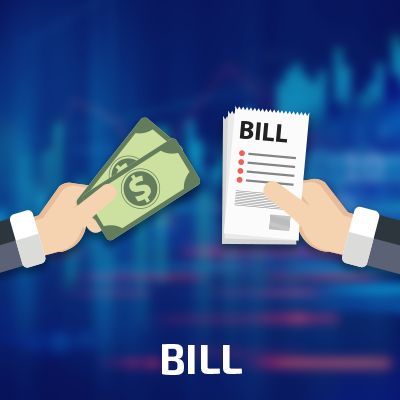
Among many financial instruments, Bill of Exchange’s occupy a special place. It is imperative to understand their meaning, variety, and how they are used.

Among many financial instruments, Bill of Exchange’s occupy a special place. It is imperative to understand their meaning, variety, and how they are used.
A bill of exchange is a security indicating payment of a debt that is not subject to dispute.
The bill appeared in the 7th century, in the 13-14th century it became a common form of debt obligations, and since then it has been considered one of the most important securities to this day. Recognition at the international level and the availability of its own legislative framework only strengthens the bill as an indisputable form of debt registration with the highest reliability.
From other debt receipts, the bill differs in that it indicates the direct fact of the presence of debt of the person who writes the bill, and the need to pay it. The cause of the debt is not indicated. Moreover, when repaying a debt, it is not necessary that the debtor personally attend. Bills are enough for the bank where the debtor has an account to pay the amount indicated in the document to the holder of the bill. That is, the issuing bill is required to have “bill capacity” - the amount that he can pay as a debt. Also, bills of exchange are forbidden to be issued to state organizations and is allowed only for private companies or individuals.
One of the main advantages of a bill of exchange over, for example, a promissory note, is its protection against fraud. And, of course, the liability itself on the bill is many times higher than that of those who operate with ordinary promissory notes. Also, bills can be sold or exchanged at the current exchange rate, like other securities.
In addition, the bill features the following features:
There are several types of bills, with their own characteristics
the most popular type of bill of exchange. The debt on it is paid by the one who issued the bill.
the debt is paid directly by the debtor, regardless of whether he wrote a bill or not. But such a bill requires the voluntary consent of the debtor, otherwise, the bill of exchange will turn into a simple one, that is, the debtor will have to pay the debt. This may not necessarily be the debtor, but a third party (individual or legal).
the bill directly indicates who needs to pay the debt. But this type of bill retains the possibility of transferring it to a third party using an endorsement - a special entry on the back of the document.
the bill of exchange indicates the person who will pay the debt, as well as details: the amount of payment, the due date and the place where it will be paid.
Depending on the terms of the transaction, bills of exchange are also divided into several main types:
Also, there is a division of bills on the time of the debt repayment:
Bills may differ in paper or small details, but each document requires the presence of a set of details, without which a bill of exchange is not considered valid.
Payment on a bill of exchange is carried out either upon presentation of it or within the time period indicated in the document. The conditions for holding depend on the type of bill: when applying for the person noted in the document, at the appointed time and place.
Also, making payments on debt requires compliance with certain rules:
Most often bills are issued by banking organizations, and the owners are individuals. Bills are for the following operations:
The promissory note usually indicates the exact maturity of the debt, delay or extension is not possible. Exception: weekends.